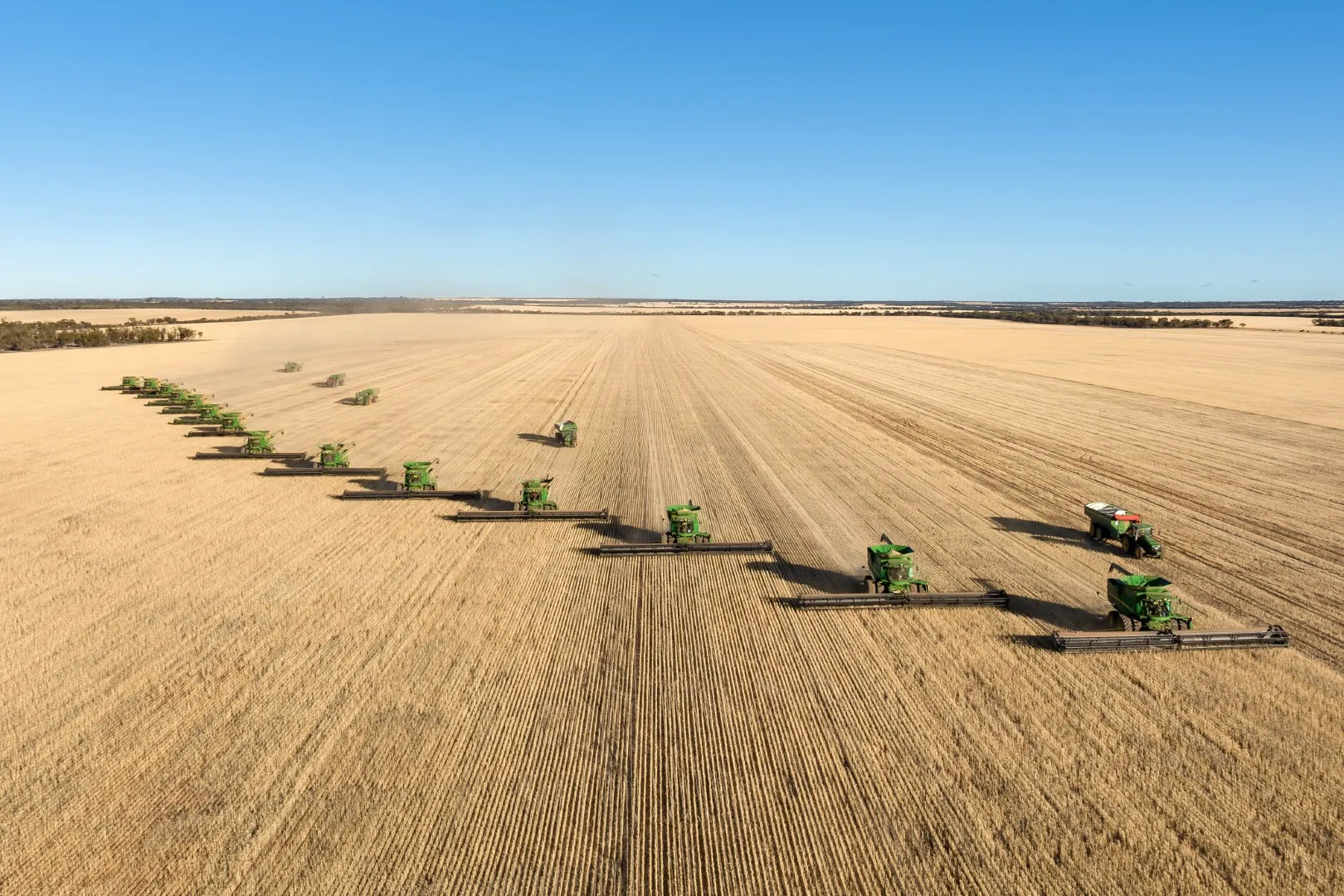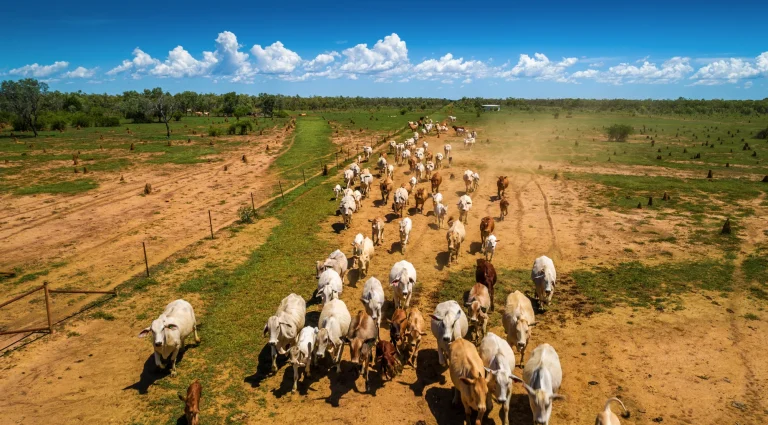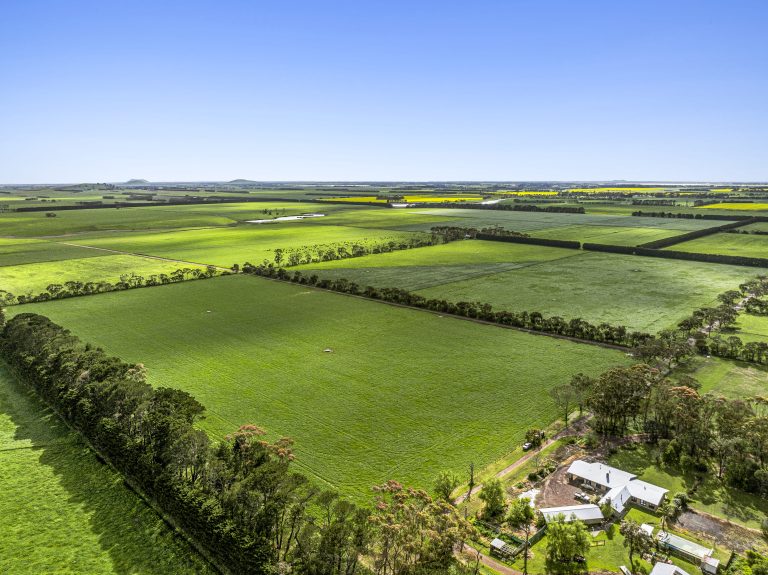Professional Guide to Techniques for Appraising Dairy Farming Assets in Queensland
Queensland’s dairy industry represents one of Australia’s most sophisticated and capital-intensive agricultural sectors, encompassing specialized infrastructure, advanced technology systems, and complex operational frameworks that create unique assessment challenges for property valuers and agricultural professionals. The state’s diverse dairy regions, from the subtropical areas of the southeast to the tropical zones of the far north, present distinct valuation considerations that require specialized expertise and comprehensive understanding of both operational dynamics and market conditions. For property owners, investors, financial institutions, and agricultural consultants, mastering the techniques for appraising dairy farming assets in Queensland has become essential for accurate market assessment and informed decision-making in this complex agricultural sector.
At Agribusiness Horizons, we recognize that dairy property valuations demand specialized knowledge across multiple disciplines including agricultural engineering, animal husbandry, regulatory compliance, and market analysis to deliver accurate assessments that reflect true operational value. Our experienced team combines extensive Queensland dairy industry knowledge with proven valuation methodologies to help clients understand the intricate factors that drive property values in this sophisticated market segment. This comprehensive guide examines the essential approaches, technical considerations, and specialized techniques that underpin professional dairy asset appraisal across Queensland’s diverse dairy regions.
Queensland’s Dairy Industry Context and Characteristics
Queensland’s dairy sector operates within unique environmental and regulatory frameworks that significantly influence property values and assessment methodologies. The state’s tropical and subtropical climates create distinct operational requirements including heat stress management, seasonal feed planning, and specialized facility design that differentiate Queensland dairy operations from their southern counterparts while creating specific valuation considerations.
The evolution of Queensland’s dairy industry has incorporated advanced cooling systems, automated milking technologies, and sophisticated feed management systems that significantly enhance operational efficiency while requiring substantial capital investment. These technological advances create complex asset bases requiring specialized assessment approaches that account for both current utility and replacement cost considerations.
Regional variations across Queensland’s dairy areas create distinct operational characteristics and market dynamics that influence property valuations. Coastal regions with higher humidity require different infrastructure solutions compared to inland areas, while proximity to processing facilities and population centers affects both operational costs and market positioning opportunities that impact overall property values.
The regulatory environment governing Queensland dairy operations encompasses animal welfare standards, food safety requirements, and environmental compliance obligations that affect both operational costs and infrastructure requirements. Understanding these regulatory frameworks becomes essential for accurate assessment of compliance obligations and potential enhancement costs that influence property valuations.
Fundamental Dairy Asset Valuation Methodologies
Income Capitalization Approach for Dairy Operations
Income-based valuation for dairy properties requires comprehensive analysis of milk production capacity, operational efficiency, and sustainable profitability patterns that reflect both current performance and enhancement potential. This methodology demands thorough understanding of dairy economics including feed costs, labor requirements, and milk pricing dynamics that drive long-term cash flow generation.
Milk production analysis forms the foundation of income-based assessments, requiring evaluation of herd productivity, lactation patterns, and seasonal variations that affect annual output and revenue generation. Professional assessment must consider both current production levels and potential improvements through genetic enhancement, nutrition optimization, or management system upgrades.
Operational cost evaluation encompasses feed expenses, veterinary care, labor requirements, and regulatory compliance costs that affect net income generation. Queensland’s climate conditions often require additional cooling and heat stress management costs that must be factored into operational expense projections and profitability assessments.
Revenue diversification opportunities including calf sales, beef production, and value-added processing activities provide additional income streams that enhance overall property values while demonstrating operational flexibility and market positioning advantages that appeal to potential buyers and support enhanced valuations.
Asset-Based Assessment Techniques
Infrastructure valuation represents a critical component requiring detailed assessment of milking facilities, feed storage systems, animal housing, and specialized equipment that collectively support dairy operations. Modern dairy infrastructure often represents substantial capital investments requiring specialized expertise to assess condition, adequacy, and replacement cost considerations.
Milking parlor assessment encompasses equipment condition, throughput capacity, and technological sophistication that directly impact operational efficiency and labor requirements. Modern robotic milking systems command premium valuations while requiring specialized expertise to assess technological adequacy and integration capabilities.
Feed management infrastructure including storage silos, mixing equipment, and distribution systems significantly impact operational efficiency while requiring substantial capital investment for modern automated systems. Properties with advanced feed management capabilities typically demonstrate enhanced operational efficiency while commanding premium market positioning.
Cooling and climate control systems represent essential infrastructure components in Queensland’s tropical climate, requiring sophisticated assessment of capacity adequacy, energy efficiency, and maintenance requirements that affect both operational costs and regulatory compliance capabilities.
Specialized Herd Valuation Techniques
Livestock asset assessment requires sophisticated understanding of dairy genetics, productivity records, and market values that reflect both immediate productive capacity and long-term genetic potential. Professional herd evaluation must consider age distribution, genetic merit, health status, and production history that collectively determine herd value and operational capability.
Genetic assessment encompasses bloodline evaluation, breeding program effectiveness, and genetic improvement potential that can significantly impact herd values and long-term operational returns. Properties with superior genetics often command premium valuations while providing competitive advantages through enhanced productivity and market positioning.
Production record analysis requires detailed evaluation of individual animal performance, lactation curves, and reproductive efficiency that demonstrate herd quality and management effectiveness. Comprehensive production records support accurate herd valuation while providing evidence of operational excellence and management capability.
Health management systems and veterinary program effectiveness impact both immediate herd values and long-term operational sustainability through their influence on productivity, longevity, and regulatory compliance. Properties with robust health management typically demonstrate superior herd values while reducing operational risks.
Queensland Dairy Asset Assessment Matrix
| Asset Category | Valuation Complexity | Specialization Required | Depreciation Factors | Market Recognition |
|---|---|---|---|---|
| Milking Infrastructure | Very High | Dairy Engineers | Technology Obsolescence | High |
| Livestock Herds | High | Animal Geneticists | Age and Production | Very High |
| Feed Systems | High | Agricultural Engineers | Mechanical Wear | Moderate |
| Cooling Equipment | Moderate | HVAC Specialists | Climate Efficiency | High |
| Processing Facilities | Very High | Food Safety Experts | Regulatory Changes | Moderate |
This framework demonstrates how different aspects of dairy farm asset evaluation Queensland require varying levels of technical expertise and specialized knowledge while considering different depreciation patterns and market recognition factors.
Agribusiness Horizons’ Dairy Valuation Expertise
Our comprehensive approach to Queensland dairy property assessment combines specialized industry knowledge with proven valuation methodologies to deliver accurate appraisals that reflect all relevant asset values and operational considerations. We understand the unique characteristics of Queensland’s dairy regions while maintaining extensive experience with diverse property types and operational systems throughout the state.
Through our specialized valuation and financial analysis services, we provide detailed assessment of infrastructure adequacy, herd quality, and operational capability that enables clients to understand true property values while identifying enhancement opportunities. Our systematic approach addresses all asset categories while considering regional market dynamics and regulatory frameworks specific to Queensland dairy operations.
We maintain extensive networks of dairy industry specialists including veterinarians, agricultural engineers, and technology experts who provide additional expertise for complex assessment requirements and specialized evaluation needs. This collaborative approach ensures comprehensive analysis while addressing technical aspects that significantly impact property values and operational potential.
Our experience with techniques for appraising dairy farming assets in Queensland enables us to provide practical guidance on value enhancement strategies, operational optimization, and market positioning that supports superior transaction outcomes while protecting client interests throughout the assessment and transaction process.
Regional Assessment Considerations
Different dairy regions across Queensland present unique characteristics that significantly impact property valuations and assessment approaches. Understanding these regional differences enables more accurate evaluation while supporting strategic investment decisions and operational planning that optimize long-term performance and market positioning.
Southeast Queensland’s established dairy regions benefit from proximity to major population centers and processing facilities while supporting intensive production systems with advanced infrastructure and market access advantages. These areas typically demonstrate higher land values while offering operational efficiencies and market positioning benefits.
Northern Queensland’s tropical dairy operations require specialized infrastructure for heat stress management and seasonal feed planning while offering opportunities for year-round production and potentially lower land acquisition costs. These regions require different assessment approaches that account for climate-specific infrastructure and operational requirements.
Darling Downs dairy properties benefit from excellent soil quality and established agricultural infrastructure while competing with other agricultural enterprises for land use. These mixed farming regions often provide diversification opportunities while requiring assessment of alternative land use potentials that may influence overall property values.
Coastal versus inland location differences significantly impact operational costs, climate management requirements, and market access considerations that affect both immediate valuations and long-term investment attractiveness for different operational strategies and buyer profiles.
Technology Integration and Modern Assessment
Contemporary dairy operations increasingly integrate sophisticated technologies that enhance operational efficiency while creating new valuation considerations requiring specialized assessment approaches. These technology investments often represent significant value components while requiring ongoing investment and expertise for optimal utilization and competitive positioning.
Robotic milking systems and automated equipment create operational efficiencies while reducing labor requirements and improving production consistency. Properties with advanced automation typically command premium valuations while requiring specialized expertise for assessment of technological adequacy and integration capabilities.
Herd management software and monitoring systems provide comprehensive operational oversight while supporting genetic improvement and health management programs. These digital systems require assessment of both current utility and future upgrade requirements that affect operational competitiveness and value retention.
Feed management automation and precision nutrition systems optimize feed efficiency while reducing labor costs and improving production outcomes. Properties with advanced feed systems often demonstrate superior operational performance while requiring specialized assessment of technological sophistication and maintenance requirements.
Regulatory Compliance and Assessment Impact
Queensland dairy operations must comply with comprehensive regulatory frameworks encompassing animal welfare, food safety, and environmental protection requirements that significantly impact both operational costs and infrastructure requirements. Understanding these compliance obligations becomes essential for accurate assessment of regulatory risks and enhancement needs.
Food safety regulations mandate specific facility designs, equipment standards, and operational procedures that require substantial infrastructure investment while affecting ongoing operational costs. Properties with superior compliance infrastructure typically command premium valuations while reducing regulatory risks and operational complexity.
Animal welfare standards increasingly influence infrastructure requirements and operational practices while affecting both compliance costs and market positioning opportunities. Properties demonstrating superior animal welfare typically enhance market appeal while reducing regulatory risks and operational challenges.
Environmental compliance requirements address water usage, waste management, and land application practices that affect both operational costs and development potential. Properties with advanced environmental management systems often demonstrate reduced regulatory risks while providing operational advantages and market differentiation.
Market Factors and Economic Considerations
Queensland dairy property values reflect both local market dynamics and broader industry trends including milk pricing, input costs, and competitive pressures that affect operational profitability and investment attractiveness. Understanding these market factors becomes essential for accurate valuation assessment and strategic planning.
Milk pricing mechanisms and processor relationships significantly impact revenue generation while affecting both immediate returns and long-term operational security. Properties with favorable supply arrangements often command premium valuations while providing operational stability and reduced market risks.
Input cost management and operational efficiency directly impact profitability while influencing competitive positioning within regional markets. Properties demonstrating efficient resource utilization typically generate superior returns while providing competitive advantages and enhanced investment appeal.
Labor availability and management requirements affect both operational costs and buyer appeal while influencing property marketability to different investor segments. Properties with efficient labor systems often demonstrate enhanced profitability while reducing operational complexity and management demands.
Environmental and Sustainability Considerations
Environmental stewardship and sustainable practices increasingly influence dairy property valuations through their impact on regulatory compliance, market positioning, and operational costs. Properties demonstrating superior environmental management often command premium valuations while providing enhanced market appeal and operational advantages.
Waste management systems and nutrient recycling capabilities create both compliance necessities and operational opportunities while affecting environmental impact and regulatory approval processes. Properties with advanced waste management typically demonstrate reduced environmental risks while providing operational benefits through improved nutrient utilization.
Water conservation technologies and efficiency improvements enhance long-term operational viability while reducing environmental impact and regulatory risk exposure. Properties with advanced water management often demonstrate operational cost advantages while providing enhanced sustainability credentials and market positioning.
Renewable energy integration and carbon footprint reduction create additional value streams while supporting environmental objectives that align with evolving market expectations and regulatory frameworks. Properties with renewable energy systems often demonstrate operational cost advantages while enhancing environmental credentials and market appeal.
Risk Assessment and Management
Risk evaluation for Queensland dairy properties encompasses operational, market, and regulatory factors that affect both immediate values and long-term investment security. Comprehensive risk assessment enables informed valuation decisions while supporting appropriate risk management strategies and operational planning approaches.
Climate risk management including heat stress mitigation and seasonal planning capabilities significantly impact operational security while affecting both immediate performance and long-term sustainability. Properties with robust climate management typically demonstrate enhanced operational resilience while providing competitive advantages during challenging conditions.
Disease management and biosecurity systems affect both herd values and operational continuity while influencing regulatory compliance and market access opportunities. Properties with superior health management often command premium valuations while reducing operational risks and regulatory challenges.
Market volatility and price risk exposure affect revenue stability while influencing investment attractiveness and valuation outcomes. Properties with diversification capabilities often provide enhanced risk management while maintaining competitive return potential and operational flexibility.
Future Trends and Assessment Evolution
Queensland’s dairy industry continues evolving through technology adoption, sustainability initiatives, and market development that create new assessment challenges while requiring ongoing adaptation of valuation methodologies and professional expertise. Understanding these trends helps position properties for enhanced competitiveness while supporting strategic planning and investment decisions.
Precision dairy management systems enable enhanced monitoring and optimization while providing data-driven decision support that improves operational efficiency and production outcomes. These advanced systems require sophisticated assessment approaches while providing competitive advantages and operational benefits.
Sustainability certification and environmental stewardship programs increasingly influence market positioning and buyer preferences while creating additional revenue opportunities through premium market access and enhanced operational efficiency. Properties with sustainability credentials often command premium valuations while providing market differentiation.
Value-added processing and direct marketing opportunities create potential for enhanced margins while providing operational diversification and strategic positioning advantages. Properties with processing capabilities often demonstrate superior returns while requiring specialized assessment of equipment adequacy and market positioning potential.
Conclusion
The techniques for appraising dairy farming assets in Queensland require sophisticated analytical frameworks that account for the complex interplay between specialized infrastructure, operational systems, and market dynamics unique to the state’s dairy sector. Professional assessment must integrate multiple valuation methodologies while considering both quantitative performance metrics and qualitative factors that drive long-term competitiveness and market appeal.
The diversity and complexity of Queensland dairy operations necessitate specialized expertise and region-specific knowledge that enables accurate assessment while supporting strategic decision-making for property transactions and operational planning. Understanding the evolving nature of dairy technology and regulatory requirements demands ongoing professional development and adaptation to maintain competitive assessment capabilities.
Consider these critical questions as you evaluate dairy property assessment needs: How will emerging animal welfare regulations and environmental standards affect infrastructure requirements and operational costs in Queensland’s dairy regions? What role will automation technology and precision management systems play in maintaining competitive advantages and market positioning? How can you optimize dairy property values through strategic infrastructure investment and operational enhancement while managing regulatory compliance and sustainability requirements?
At Agribusiness Horizons, our specialized expertise in Queensland dairy property assessment and comprehensive understanding of industry dynamics, regulatory frameworks, and market conditions help clients navigate these complex valuation challenges while identifying opportunities for value enhancement and strategic positioning. Contact our experienced team today to discuss how our dairy asset appraisal techniques and industry expertise can support your assessment requirements and strategic planning objectives.



